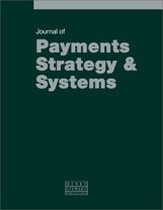Innovative solutions to leverage resources and maximise efficiency in the battle against cheque fraud
Abstract
This paper presents an approach to innovative solutions in using available resources and maximising efficiencies within the fraud shop. It reviews the effectiveness of an enterprise fraud alert management system and a fraud category, cheque fraud, which is in the eyes of many experts on its way to its demise, but continues to be a challenge for financial institutions. Undeniably, according to fraud surveys and consortiums of fraud experts, financial institutions continue to combat cheque fraud, which over the years has evolved from just ‘bad cheque writing’ into sophisticated frauds ranging from work at home, Nigerian telemarketing schemes involving rings across multiple countries, to cross-channel fraud and identity theft. According to the latest available American Bankers Association Deposit Account Fraud Survey 2009 ‘counterfeit items accounted for 26 per cent of 2008 cheque fraud and 30 per cent of the loss amount. This category includes losses from organised customer scams, frequently referred to as advance fee fraud, international lottery scams, inheritance fee scams, etc’ (ABA Deposit Account Fraud Survey Report 2009, p. 21). It is important to understand that fraud data streams, which for the most part include cheques, either at the point of entry (deposited cheques) or as a means of funds exiting the bank (on-us cheques), cannot be effectively worked in silos, but must be tackled in a manner in which suspicious alerts are aggregated to allow the fraud analyst to be presented with data at the account level, or more effectively at the customer level, in order to make educated, quick decisions before the fraudster absconds with the institution’s money. The more information that can be amassed into one platform or an enterprise fraud alert management system, the increased chance that a fraud is caught earlier. Building such a platform takes time and money, and the most effective are completed in phases, as the project can be an overwhelming one if tackled all at once. As payments continue to evolve, so will fraud trends. Cheques will also continue to be part of the picture for a while longer, specifically in the US. This paper will consider proven solutions that have improved performance in managing fraud prevention efforts: the implementation of an enterprise fraud alert management system and applying predictive analytics to fraud systems that screen suspicious/fraudulent deposited and on-us cheques.
The full article is available to subscribers to the journal.
